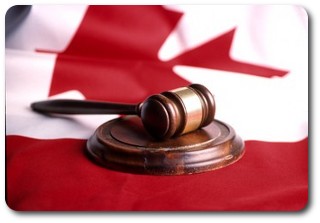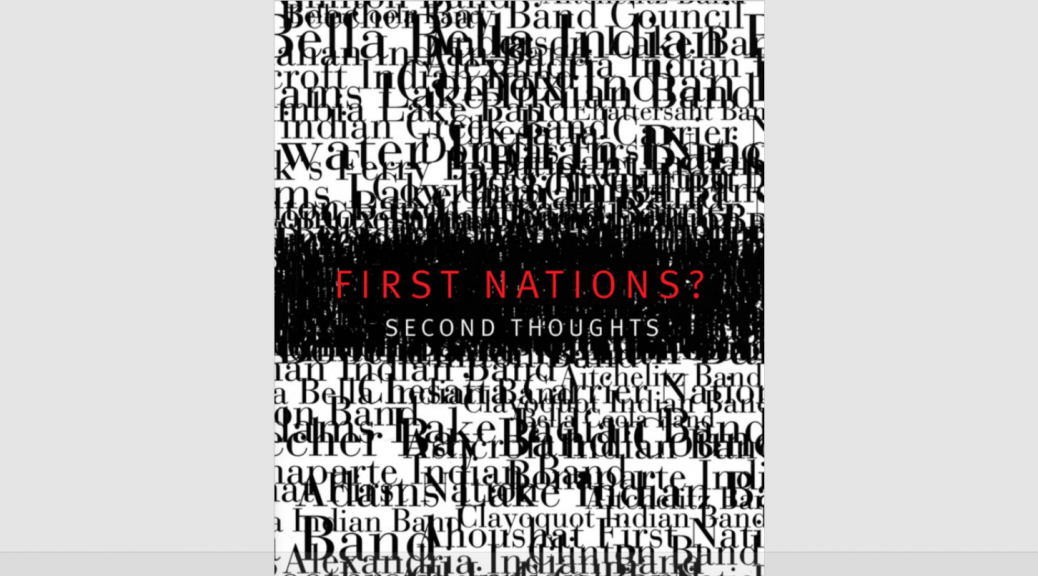In order to describe and evaluate the Canadian criminal justice system, two particular models have been developed: crime control and the due process models. By evaluating the political implications of the Charter on the criminal justice system, this article will accomplish four objectives. First, it will describe the framework in which these models operate and explain their theoretical purpose. Secondly, it will establish the metaphor and complexities of the two models. Thirdly, it will argue for the advantages of the Due Process Model. Finally, concluding that the shift from crime control to due process, supported by the Charter of Rights and Freedoms, is an improvement on Canadian criminal justice system.
The two models developed and explained in Herbert Packer’s The Limits of the Criminal Sanction are theoretical extremes from which the actual criminal justice system is gauged. On one end is the Crime Control Model, which emphasizes efficiency in suppressing criminal action to protect citizens’ positive rights. On the opposite end of the spectrum is the Due Process Model, which emphasizes reliability and reducing error to protect the accused from the State’s authority. The pure form of crime control would give unlimited discretion for law enforcement and the prosecution without concern for reliability of evidence, leading to a War Measures Act scenario. The pure form of due process would lead to a frozen justice system overwhelmed by procedure, leading to no suppression of criminal belligerence. Of course, the criminal justice system does not exist in these theoretical vacuums, since “the models are polarities and so are the schemes of value that underlie them” (154, Packer). The space between the models is “occupied by stronger or weaker notions of how this contest is to be arranged, in what cases it is to be played and by what rules” (157, Packer). By framing the criminal process with these models, one can better understand the political impact of the Charter of Rights and Freedom on the function of the Canadian judicial system.
Prior to the enactment of the Charter of Rights and Freedoms in 1982, the “Canadian criminal justice policy followed the basic tenets of what Herbert Packer called the crime control model of criminal law” (83, Manfredi) which de-emphasized the rights and dignity of the accused for the sake efficiency. Consequently, crime control is not as charter-friendly as due process. The basic doctrine of crime control emphasizes that by suppressing crime the government provides citizens with the freedom to live securely. This positive right (freedom to) is guaranteed by efficiently dealing with anti-social actors who threaten to bring society into a state of chaos (158, Packer). Therefore, crime control has a utilitarian outlook which demands maximization of wellbeing for the majority of citizens over the rights of the individuals being accused. The old adage of ‘it’s better to have nine innocent persons found guilty than one guilty person found innocent’ applies best in describing judicial leanings toward the Crime Control Model.
 From the crime control perspective, the criminal process must emphasize efficiency, which means the capacity to apprehend, try, convict and dispose of a high proportion of criminal offenders with the outmost speed and finality. Herbert Packer uses an assembly-line metaphor to explain how the Crime Control Model works. Imagine a grim industrial factory where all criminal cases are placed on a conveyor belt. This conveyer belt is in constant motion, carrying the cases to a long series of fixed stations where workers perform a task on each case until it is a final product, which is then removed shipped off to prison (159, Packer). In effect, the accused are treated like streamlined products on an assembly-line with fewer procedural hurdles to prevent wrongful conviction. Crime control deemphasizes formal, adversarial processes “in favour of an administrative fact-finding process dominated by investigative and pre-adjudicative procedures” (83, Manfredi) where law enforcement screening removes the guilty pleas and eliminates the factually weak cases early on. A massive amount of discretion is placed on police and the prosecution whose chief goal is to finalize cases. During the investigation unchecked procedural mistakes are very possible. However, the Crime Control Model states that reliability is traded-off for efficiency only to the point where the court may be placed in disrepute. Clearly, crime control is not interested in individual rights but will take them into consideration to maintain court legitimacy.
From the crime control perspective, the criminal process must emphasize efficiency, which means the capacity to apprehend, try, convict and dispose of a high proportion of criminal offenders with the outmost speed and finality. Herbert Packer uses an assembly-line metaphor to explain how the Crime Control Model works. Imagine a grim industrial factory where all criminal cases are placed on a conveyor belt. This conveyer belt is in constant motion, carrying the cases to a long series of fixed stations where workers perform a task on each case until it is a final product, which is then removed shipped off to prison (159, Packer). In effect, the accused are treated like streamlined products on an assembly-line with fewer procedural hurdles to prevent wrongful conviction. Crime control deemphasizes formal, adversarial processes “in favour of an administrative fact-finding process dominated by investigative and pre-adjudicative procedures” (83, Manfredi) where law enforcement screening removes the guilty pleas and eliminates the factually weak cases early on. A massive amount of discretion is placed on police and the prosecution whose chief goal is to finalize cases. During the investigation unchecked procedural mistakes are very possible. However, the Crime Control Model states that reliability is traded-off for efficiency only to the point where the court may be placed in disrepute. Clearly, crime control is not interested in individual rights but will take them into consideration to maintain court legitimacy.
After the enactment of the Charter of Rights and Freedoms in 1982, “Charter decision[s] remold[ed] the Canadian criminal law process along the lines of the ‘due process’ and away from the earlier ‘crime control’ model” (51, Morton). Simply put, due process is more charter-friendly than crime control. This is because the Due Process Model emphasizes the rights and dignity of the accused for the sake of reliability and a fairer trial. For this model, one must recognize that, “people are notoriously poor observers of disturbing events – the more emotion-arousing the context, the greater possibility that recollection will be incorrect” (163, Packer). Therefore, for the benefit of the accused, due process puts more value on reducing factual errors in determining guilt. In effect, the Due Process Model focuses on the negative rights of the accused who, under a formal and adversarial process, is placed on equal footing with the authority of the State. To explain due process, Herbert Packer uses the metaphor of the obstacle course where at every stage there are “impediments to carrying the accused any further along in the process” (163, Packer). This is justified since the loss of liberty is the biggest deprivation the government can inflict on the individual and therefore the criminal justice process should minimize government abuses and tolerance for errors.
 The procedural hurdles are primary to the Due Process Model where not only factual guilt but legal guilt is necessary for conviction. Legal guilt refers to the “‘dignity enhancement’ rationale for greater procedural constraints on law enforcement” (86, Manfredi), which means the court can use various Charter provisions to protect the accused and to safeguard the credibility of the criminal process, making it more difficult to perceive legal guilt. This is justified most lucidly by John Rawls who states that the “most important good that any society can promote is self-respect” (89, Manfredi). “From the Rawlsian perspective, the State owes its citizens the most extensive procedural safeguards available consistent with their right to equal self-respect; consequently, no procedure that trades off reliability for efficiency is tolerable” (89, Manfredi). Rawls therefore supports the Charter and the post-Charter move towards the Due Process Model since it up-holds the self-respect of the accused. In a sane world and where the obstacle course is easily navigated, due process is the logical choice away from authoritarian crime control perspective. There are procedural issues that threaten to slow the gears of justice from 5th gear to neutral.
The procedural hurdles are primary to the Due Process Model where not only factual guilt but legal guilt is necessary for conviction. Legal guilt refers to the “‘dignity enhancement’ rationale for greater procedural constraints on law enforcement” (86, Manfredi), which means the court can use various Charter provisions to protect the accused and to safeguard the credibility of the criminal process, making it more difficult to perceive legal guilt. This is justified most lucidly by John Rawls who states that the “most important good that any society can promote is self-respect” (89, Manfredi). “From the Rawlsian perspective, the State owes its citizens the most extensive procedural safeguards available consistent with their right to equal self-respect; consequently, no procedure that trades off reliability for efficiency is tolerable” (89, Manfredi). Rawls therefore supports the Charter and the post-Charter move towards the Due Process Model since it up-holds the self-respect of the accused. In a sane world and where the obstacle course is easily navigated, due process is the logical choice away from authoritarian crime control perspective. There are procedural issues that threaten to slow the gears of justice from 5th gear to neutral.
To recap, the essay first illustrated the two models as abstract explanations for the function of criminal law procedure. Then subsequently, the essay vividly showed the Crime Control Model’s emphasis on conveyer belt efficiency, which is not as conducive to a post-Charter Canada and demonstrated that Due Process Model emphasizes reliability and legal guilt which is conducive to the post-Charter Canada. The essay will now address the phenomenon of how the Charter, with its political implications, has shifted criminal law to a more due process system and argue why that is better for the justice system.
 The Charter of Rights and Freedoms emphasizes individual rights over group rights. With the end of the days where the ‘unwritten constitution’ was the preferred method of rights protection in Canada, the Charter has handed discretion over to the judges. Prior to the Charter, Canada had a crime control emphasizing criminal system; the rights of the individual were often usurped by the effectiveness of the process. With the enactment of the Charter, criminal law enforcement is the public policy most affected (32, Morton). According to Morton, the Charter offers “a new way of making decisions about rights, decisions in which judges play a more central and authoritative role” (33, Morton). Judicial discretion “has been transformed from a tool for the efficient implementation of legislative objectives into an end in itself” (102, Manfredi). With “the current trend…pushing [criminal justice] a significant distance across the spectrum toward the due process model” (101, Manfredi), the interpretation of the Charter by judges has been crucial to such a change.
The Charter of Rights and Freedoms emphasizes individual rights over group rights. With the end of the days where the ‘unwritten constitution’ was the preferred method of rights protection in Canada, the Charter has handed discretion over to the judges. Prior to the Charter, Canada had a crime control emphasizing criminal system; the rights of the individual were often usurped by the effectiveness of the process. With the enactment of the Charter, criminal law enforcement is the public policy most affected (32, Morton). According to Morton, the Charter offers “a new way of making decisions about rights, decisions in which judges play a more central and authoritative role” (33, Morton). Judicial discretion “has been transformed from a tool for the efficient implementation of legislative objectives into an end in itself” (102, Manfredi). With “the current trend…pushing [criminal justice] a significant distance across the spectrum toward the due process model” (101, Manfredi), the interpretation of the Charter by judges has been crucial to such a change.
Prior to 1982, the confessions of the accused needed only to be relevant and reliable. After 1982, there was a concern for unreasonable search and seizure and the right against self-incrimination under sections 8 and 10(b) respectively. The exclusionary rule in Canada is listed under section 24(2), which states that illegally gathered evidence is inadmissible if its admission would discredit the administration of justice. As we will see later, if the evidence is real and not self-incriminating and yet obtained in an illegal way, it can be admissible. An example of where judges have changed the parameters of legal guilt is in Hunter v. Southam Inc (1984) where Justice Dickson excluded evidence because of the interpretation of Charter section 8 (unreasonable search and seizure) as being designed to protect individuals from State infringement of privacy (87, Manfredi). For the Supreme Court, “this [negative rights] approach was consistent ‘with the apparent intention of the Charter to prefer, where feasible, the rights of the individual to be free from State interference to the interest of the State in advancing its purposes through such interference” (87, Manfredi).
When concluding that due process is preferable to crime control, the argument is strengthened by the fact that individuals, in the Crime Control Model, are treated more like products on an assembly-line that as people. They are subject to the possible tyranny of those with the discretion to decide their fate. The criminal justice system should not blindly trust law enforcement agents and Crown prosecutors to view evidence objectively when their overriding interest is efficiency. From the crime control perspective, the state should have all the tools it needs to suppress whoever could be seen as guilty, this simply is unjust. Taken to the theoretical extreme, crime control is complete suppression by the state. Such a scenario has been realized during War Measures Act implementations. Today, a proper check against such a situation can only be realized throught the Charter. Thanks to that document, the state cannot intervene on privacy which could be used for other intentions such as repression of political parties and democratic discourse for what they would call ‘greater good’. If the judicial system does not limit the state from intervening in the private sphere, our rights will be compromised and under certain conditions an authoritarian regime could be installed. As Rawls argues, the self-respect is primary in any society. In short, the individual’s rights are now sacred and must be protected. The crime control model focuses more on positive rights for all citizens as a utilitarian value that underplays individualism, which post-Charter Canada cannot condone.
If we allow the state more legal authority or even an acceptance of error tolerance for the sake of efficiency then a more authoritarian existance may emerge in one of the most civilized societies in the World. Since Canada is not a society on the verge of utter chaos, the criminal process should be able to place individual rights above trying to deter criminal action. Therefore, leaning towards crime control is not necessary in Canada because our crime rates are relatively low and the accused deserve equal footing with the Crown. Despite it being an obstacle course, due process is a positive means of protecting the negative rights of individuals. Efficiency is still important in the Due Process Model but it should never overshadow reliability. As the Canadian criminal justice system increases its reliance on the Due Process Model, an increase in the expenditure on the number judges and lawyers is justified for the system to maintain some degree of efficiency while also respecting the rights of the accused. Intuitively, as an accused, preference would be made for due process because it may offer a chance of avoiding conviction. Despite this acceptance that some guilty persons may go free, at least due process respects the rights of accused who often have economic limitations and cannot afford the best lawyers to defend them against the prosecution.
Moving towards the Due Process Model is an important improvement from the alternative in the criminal justice process. Obviously, however, a line must be drawn to where due process cannot exceed. The R v. Feeney case is an example of due process going too far. The Supreme Court overturned the conviction based on law enforcement procedural errors in section 10(2) and section 8, even while the accused was certainly factually guilty with real evidence found during the unreasonable search and seizure; he was convicted again in a new trial that cost time and energy. Regardless of Michael Feeney’s guilt, ensuring that the state did not falsely sentenced Feeney, making absolutely sure that an innocent person does not go to prison is arguably a more noble and justified approach to criminal justice. The alternative is inexcusable error toleration prescribed in the Crime Control Model, leading to tragedies like the wrongful conviction of David Milgaard.
Framed on two models which help explain the criminal justice system, this essay finds it patently evident that of the Canadian criminal law process is moving towards due process to the benefit of the individual limiting the state’s capacity to put more innocent people behind bars to deter criminal action. This reality is beneficial for the legitimacy of the criminal process, ensuring that respect for individual rights is up-held in accordance with the Charter of Rights and Freedoms. The arguments for-or-against either model depends on views of communitarian and individual rights, however the ultimate test of ones support for either model is to ask: what model would be more appealing if you were the accused? Due process is the model of choice.
Works CitedHunter v. Southam Inc. [1984] 2 S.C.R. 145.F.L. Morton. The Political Impact of the Canadian Charter of Rights and Freedoms.Canadian Journal of Political Science, Vol. 20, No. 1 (Mar., 1987), 31-55.Manfredi, Christopher. Judicial Power and the Charter: Canada and the Paradox of Liberal Constitutionalism. 2nd Edition. Don Mills: Oxford University Press Canada, 2001.Packer, Herbert. The Limits of the Criminal Sanction. Stanford, Cal: Stanford University Press, 1968.R. v. Feeney, [1997] 2 S.C.R. 13.Rawls, John. A Theory of Justice. Belknap Press of Harvard University Press, 1999.



